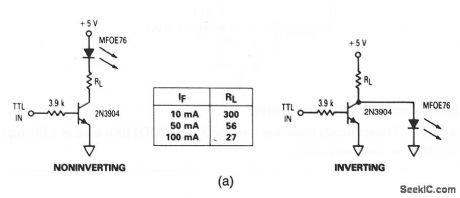
Instead of using the default pin 13, we will be using pin 0 instead.
OPTOISOLATOR CIRCUIT CODE
The code is actually quite simple, you can just adapt it from the Blink sketch from the Arduino IDE. In electrical and electronic engineering, we often come up with certain circuits where a digital logic circuit such as a microprocessor or microcontroller, etc. Not much part is required, though you can choose to use the Arduino Uno instead of ATtiny85.
OPTOISOLATOR CIRCUIT HOW TO
How to test an opto isolator using a multimeter. Testing a 6N138 optoisolator in circuit using the DSO 138 oscilloscope. After drawing the circuit control, it with a simple button. This shows a fully working optoisolator with the MIDI data going through the input of the 6N138 optoisolator and appearing at the output pin 6. In-circuit diagram as we discuss snubbing circuit with the optocoupler, in proteus, you will view some snubber less TRIAC which can be used with the circuit to make the circuit simpler. We’ll test the relay by making the relay toggle its state every 0.5 seconds, which will in turn toggle the LEDs on and off respectively according to the connections to the relay. As soon as the signal stops it returns to a flat line at 5 volts. The internal connection would look something like this: 6) Place the optocoupler IC in the female headers. 5) Connect the 4V DC battery with the circuit. 4) Solder the +ve terminal of the LED with output female header & the -ve terminal with the ground of the circuit. Below is a summary of the abbreviations & its meaning: 3) Solder the Pushbutton in series with the female headers. There are 6 pins on the relay, 3 for the controller circuit, and the other 3 is for the load circuit.


(If a normal relay is used, it is likely the control circuit will be fried if there is a sudden current spike in the load circuit, which may go through the relay to the control circuit.) How they work?Īs the name suggest, optoisolator relays worked by controlling the state of the relay using light. Whereas for optoisolator relays, the control circuit is isolated from the load/device circuit. This type of (optoisolator) circuit is commonly used when one wants to isolate high current load circuit from the control circuit. What is the main difference between a normal relay and an optoisolator relay? The difference can be seen from the name: normal relays would have the control circuit and load/device circuit connected directly to the relay itself. With that, this tutorial will give you a short insight on how one would be able to interface this with an Arduino. Need to control devices that has high power or does not have the same power rating as the Arduino? Using an optoisolator relay is one wokr around you can choose to approach this issue.


 0 kommentar(er)
0 kommentar(er)
